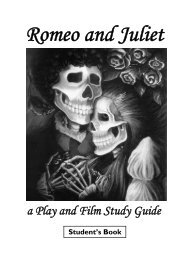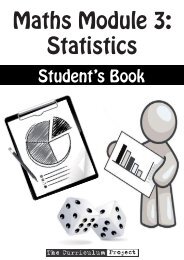Teacher's Guide - The Curriculum Project
Teacher's Guide - The Curriculum Project
Teacher's Guide - The Curriculum Project
- No tags were found...
Create successful ePaper yourself
Turn your PDF publications into a flip-book with our unique Google optimized e-Paper software.
Tax (cont’d)Discussion1. Do you know what a ‘black market’ is? Can you guess? Elicit ideas fromindividual students and check agreement with the rest of the class.Black Markets. Ask students to read the text on ‘Black Markets’.Groupwork2. In groups of 3-5, ask the students about black markets in their communities.What kinds of goods / services are sold in it, and why? Ask them to make a list ofthese goods / services. Also ask them if they can think of other goods that areoften sold in black markets around the world, and why. Give them about 10-15minutes. <strong>The</strong>n elicit one idea from each group in turn and check agreement withthe rest of the class. Here is a list of items that are traded in black markets aroundthe world:Labour (illegal / untaxed work), Money (i.e selling kyat at the unofficial exchange rate), Illegal Drugs,Weapons, Cigarettes, Alcohol, Fake perfume, Fake branded clothing (ie.fake Nike, Adidas etc.)Ask the students what they think the cartoon is about.Answer: It refers to the black market trade in human organs. Some people in poor countriesillegally sell their organs (i.e. kidneys) to people in richer countries who need them. Somepeople also steal organs from dead bodies to sell to hospitals and individuals for transplants.Pre-teach: restriction (noun): limitation; fake (adj): not real, original, authentic; incentive(noun): a motivation or encouragement to do something.Ask students to read the next two paragraphs of text. Check understanding.Pairwork3. In pairs, ask students to draw up a list of things that they think are sold mostwidely on black markets around the world. Give them 5-10 minutes. <strong>The</strong>n, elicitone idea from each pair in turn, ask them why they think that it is sold on theblack market. Write their ideas on the board and check agreement with the restof the class. <strong>The</strong> information below will help you.Some economists estimate that the global black market is worth about US$990 billion. <strong>The</strong> differentcategories include:Counterfeit and piracy (US$522 billion): alcohol, clothing & shoes, books, cigarettes, cosmetics,money, pharmaceutical drugs, CD & DVD (music & film), passports, watches, software, toys.Drugs (US$322 billion): marijuana, amphetamines, cocaine, herion, ecstasy.Environmental goods (US$56 billion): animals & wildlife trafficking, illegal fishing, gas & oilsmuggling, illegal logging, diamond smuggling.Humans (US$44 billion): human trafficking & smuggling, illegal adoption, human organs & bodyparts, prostitution.Consumer Products (US$37 billion): art & antique smuggling, cigarette smuggling.Weapons (US$10 billion): arms trafficking, illegal sales of nuclear and radioactive materials.Ask a student to read aloud the fourth paragraph about supply and demand.<strong>The</strong> Burma-Thailand Black Market. Ask studemts to read the paragraph.Discussion4. Give students a few minutes to think about these questions. Elicit ideas fromindividual students and discuss.<strong>The</strong> <strong>Curriculum</strong> <strong>Project</strong> ECONOMICS: an introduction - Teacher’s <strong>Guide</strong>29


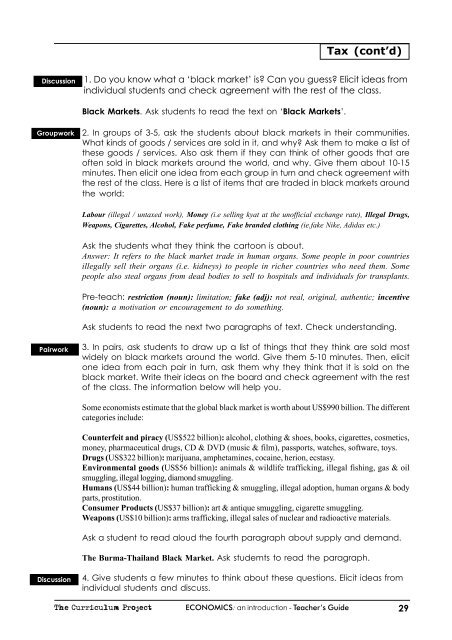
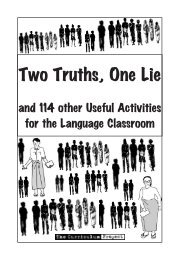
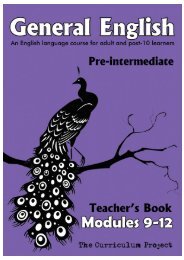
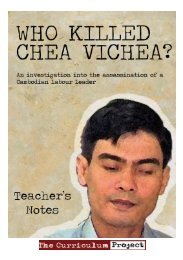

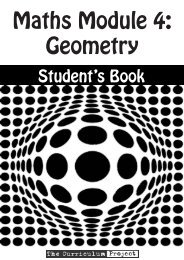

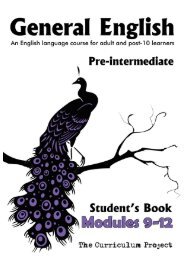

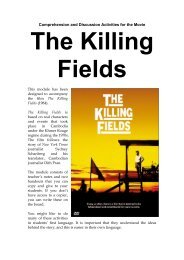
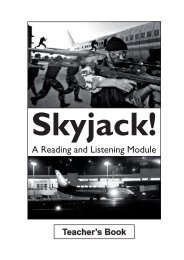
![[Eng] Nov 2012 DRAFT - The Curriculum Project](https://img.yumpu.com/45590859/1/184x260/eng-nov-2012-draft-the-curriculum-project.jpg?quality=85)

